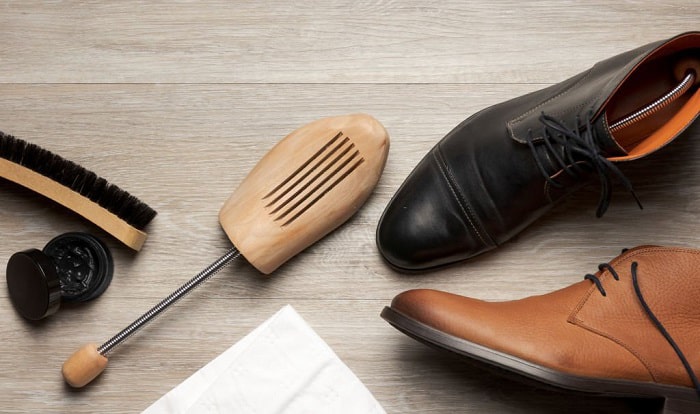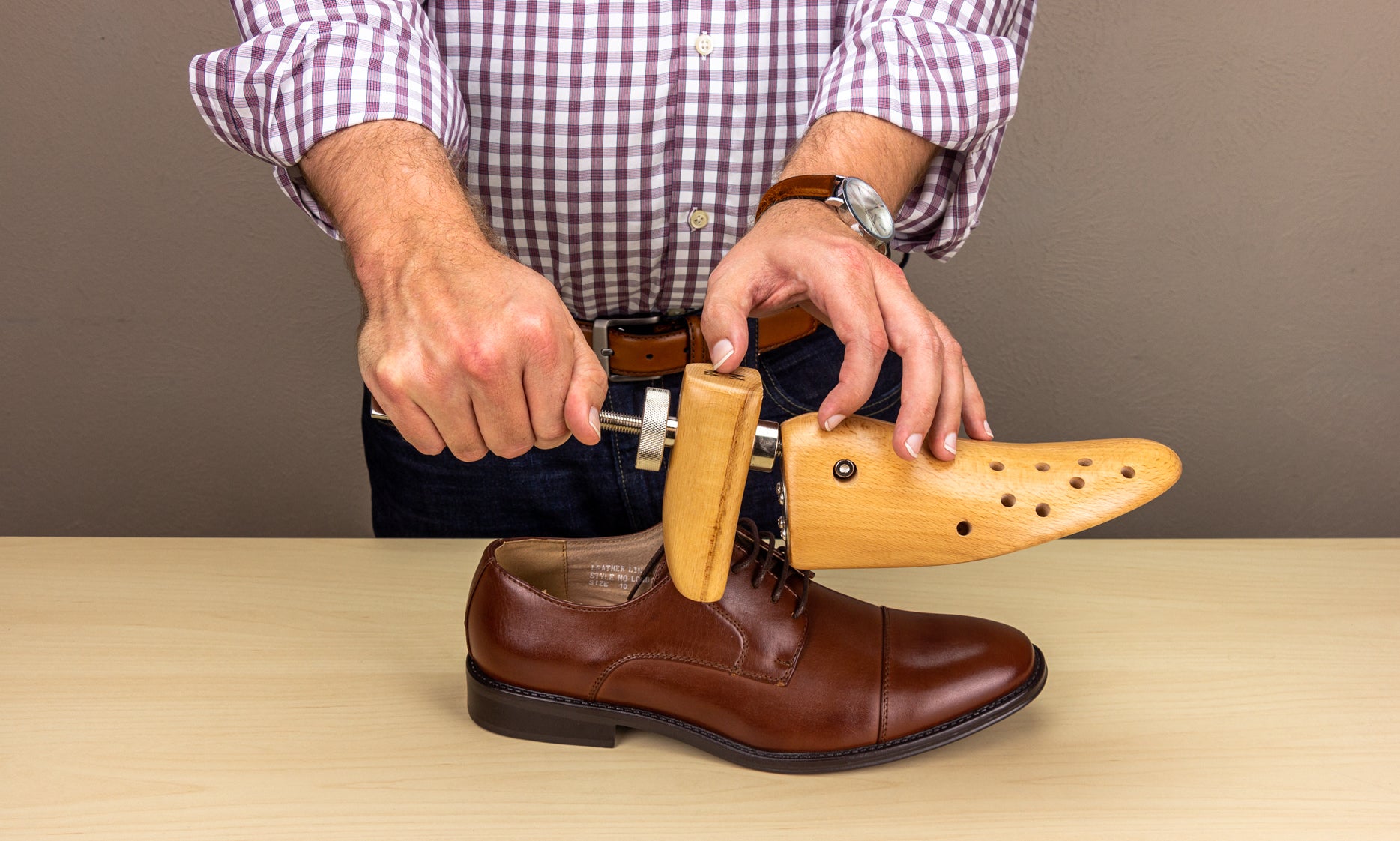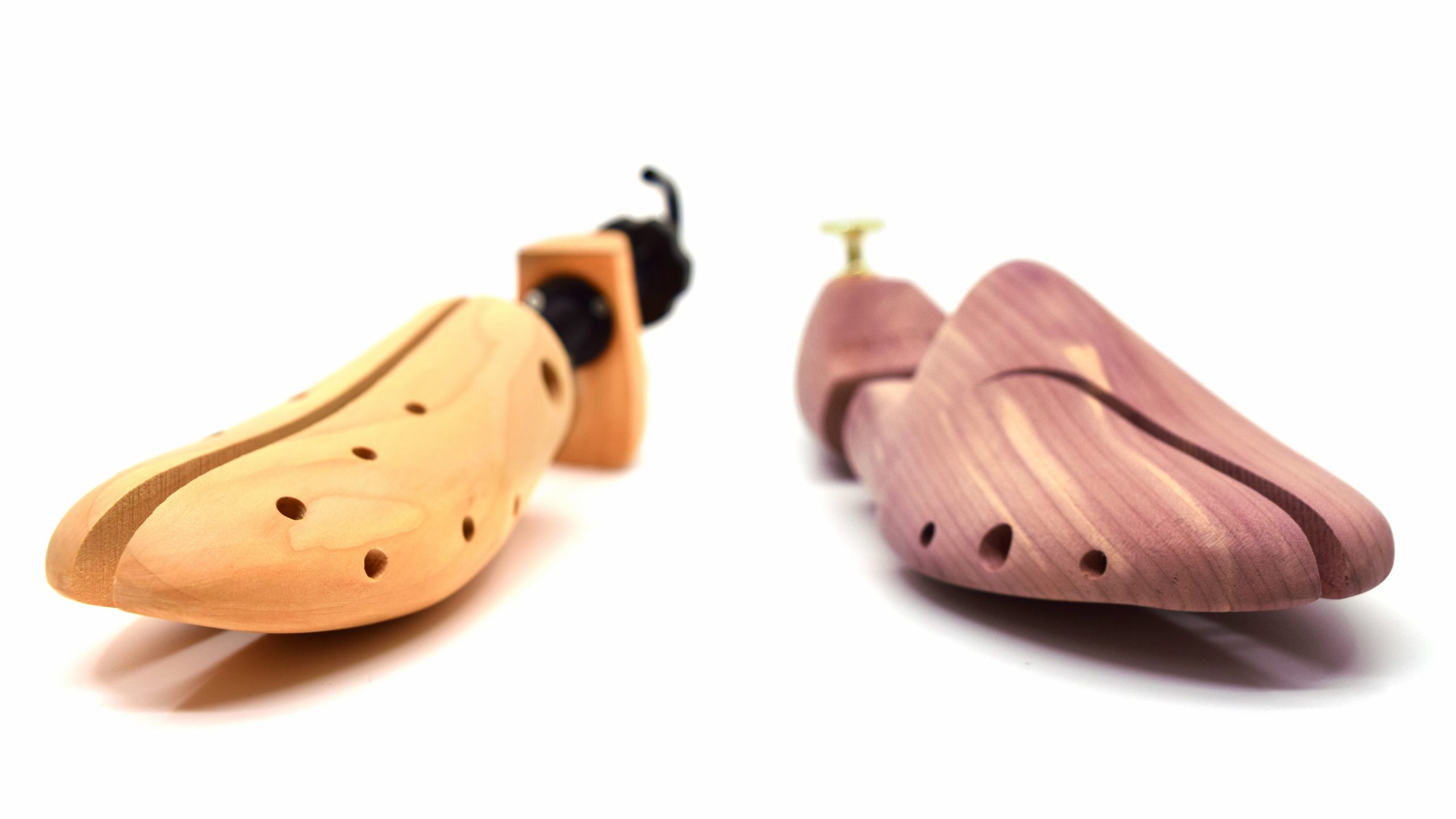Have you ever bought a pair of shoes that looked perfect but felt too tight or uncomfortable? Or have you ever had a pair of shoes that shrank over time or after washing? If so, you might have wondered if there is a way to make your shoes fit better without having to buy new ones or suffer from blisters and pain.
The answer is yes: shoe stretchers can help you achieve that. In this thorough guide, I will explain how shoe stretchers work, how to use them properly, and what tips and precautions you should follow to get the best results.

What are Shoe Stretchers?
Shoe stretchers are devices that are designed to expand the size and shape of your shoes by applying pressure and tension. They can be made of wood, metal, plastic or other materials, and they come in different types and sizes to fit different kinds of shoes. Shoe stretchers can help you with various problems, such as:
- Shoes that are too tight or narrow in the toe box, heel, or instep
- Shoes that cause corns, bunions, hammertoes, or other foot deformities
- Shoes that need to accommodate orthotics, inserts, or socks
- Shoes that have shrunk due to humidity, temperature, or washing
How Shoe Stretchers Work
Shoe stretchers work by applying pressure and tension to the inside of your shoes, stretching the material and creating more room for your feet. Depending on the type and quality of the shoe stretcher, it can stretch your shoes in different directions and dimensions, such as:
- Length: This is the most common and basic function of shoe stretchers. They can extend the length of your shoes by a few millimetres or up to half an inch, depending on how much you adjust them.
- Width: Some shoe stretchers can also widen your shoes by expanding the sides of the toe box, heel or instep. This can help you if your shoes are too narrow or pinch your feet.
- Height: Some shoe stretchers can also raise the height of your shoes by lifting the top of the toe box, heel or instep. This can help if your shoes are too low or press on your toes or arches.
Shape: Some shoe stretchers can also modify the shape of your shoes by adding or removing curves, angles or bumps. This can help if your shoes have irregularities that cause discomfort or pain.

To achieve these effects, shoe stretchers usually have one or more of the following features:
- A handle or a knob that allows you to adjust the length and width of the shoe stretcher
- A screw or a lever that allows you to lock the shoe stretcher in place once you reach the desired size
- A spring or a mechanism that allows the shoe stretcher to maintain constant pressure inside the shoe
- A plug or a bunion attachment that allows you to target specific areas of the shoe that need more stretching
- A spray or a liquid that helps soften the material of the shoe and make it more elastic
How to Use Shoe Stretchers Properly
To use shoe stretchers properly, you need to follow these steps:
- Choose the right type and size of shoe stretcher for your shoes. There are different kinds of shoe stretchers for different kinds of shoes, such as flats, heels, boots, sneakers, etc. You also need to make sure that the shoe stretcher matches the size and shape of your shoes. For example, if you have a pair of round-toed shoes, you need a round-toed shoe stretcher.
- Insert the shoe stretcher into your shoe. Make sure that it fits snugly and evenly inside the shoe. If it is too loose or too tight, it might not work properly or damage your shoe.
- Adjust the length and width of the shoe stretcher according to your needs. Use the handle or the knob to expand or contract the shoe stretcher until it reaches the desired size. You can also use the plug or the bunion attachment to target specific areas of the shoe that need more stretching.
- Lock the shoe stretcher in place. Use the screw or the lever to secure the shoe stretcher inside the shoe. Make sure that it is not too loose or too tight, as it might lose pressure or damage your shoe.
- Apply some spray or liquid to help soften the material of the shoe. This step is optional but recommended, as it can make the stretching process faster and easier. You can use a special shoe stretching spray or liquid that is designed for this purpose, or you can use some household items such as rubbing alcohol, vinegar or water. Spray or apply some liquid on the outside and inside of the shoe where you want
- Leave the shoe stretcher inside the shoe for at least 24 hours. This is the minimum time required for the shoe stretcher to work effectively. You can leave it longer if you want more stretching or if the material of the shoe is very stiff or thick.
- Remove the shoe stretcher from the shoe and try on the shoe. You should notice a difference in the fit and comfort of the shoe. If the shoe is still too tight or uncomfortable, you can repeat the process until you are satisfied. If the shoe is too loose or distorted, you can try to shrink it back by applying some heat or cold to it.

Tips and Precautions for Using Shoe Stretchers
To get the best results and avoid damaging your shoes, you should follow these tips and precautions when using shoe stretchers:
- Use shoe stretchers only on shoes that are made of natural materials, such as leather, suede or canvas. Synthetic materials, such as plastic, rubber or nylon, are not suitable for stretching and might crack or tear.
- Use shoe stretchers only on shoes that are in good condition and have no holes, tears or stains. Damaged shoes might not stretch evenly or might worsen their condition.
- Use shoe stretchers only on shoes that are slightly too tight or uncomfortable. If your shoes are too small or painful, you might need to buy new ones or see a podiatrist.
- Use shoe stretchers gradually and moderately. Do not overstretch your shoes or force them to fit a size that is too big for them. This might damage your shoes or cause them to lose their shape and support.
- Use shoe stretchers with care and caution. Do not apply too much pressure or tension to your shoes or leave them for too long with the shoe stretcher inside. This might damage your shoes or cause them to break or burst.
- Use shoe stretchers with patience and persistence. Do not expect immediate or miraculous results from using shoe stretchers. It might take several tries and adjustments to achieve the desired fit and comfort.
Final Say
Shoe stretchers are useful devices that can help you make your shoes fit better and more comfortably. They work by applying pressure and tension to the inside of your shoes, stretching the material and creating more room for your feet. They can help you with various problems, such as shoes that are too tight, narrow, low or irregular.
To use shoe stretchers properly, you need to choose the right type and size of shoe stretcher for your shoes, insert it into your shoes, adjust it according to your needs, lock it in place, apply some spray or liquid to help soften the material of the shoe, leave it for at least 24 hours, remove it and try on your shoes. We hope this article has given you a complete guide and tips on how boot stretchers work and how to use them properly.



No comment yet, add your voice below!